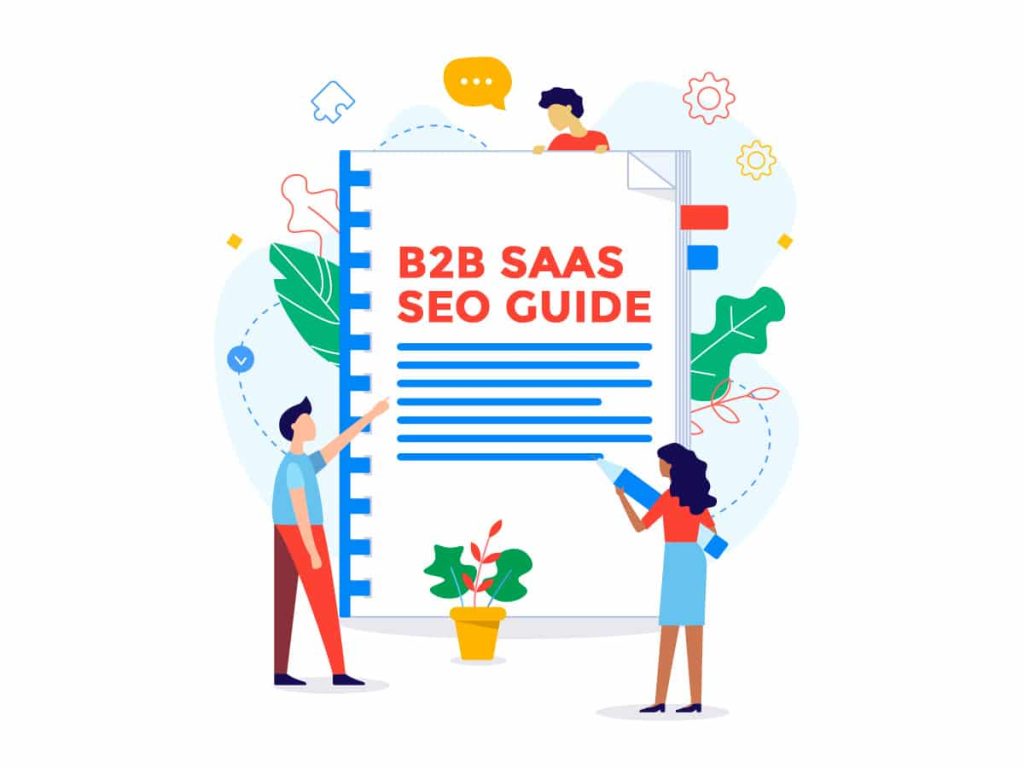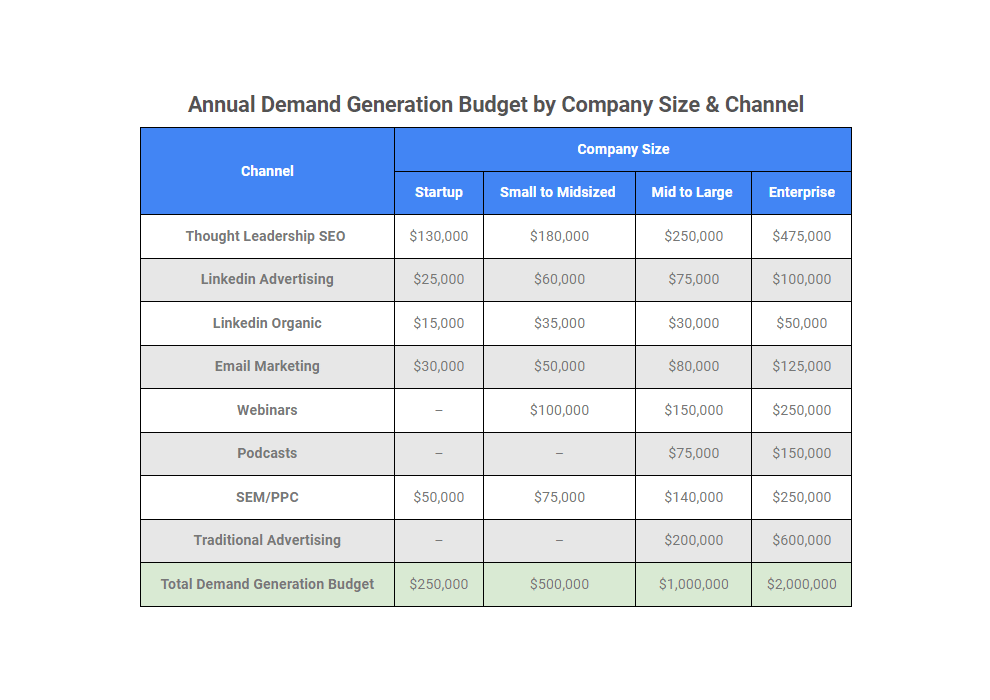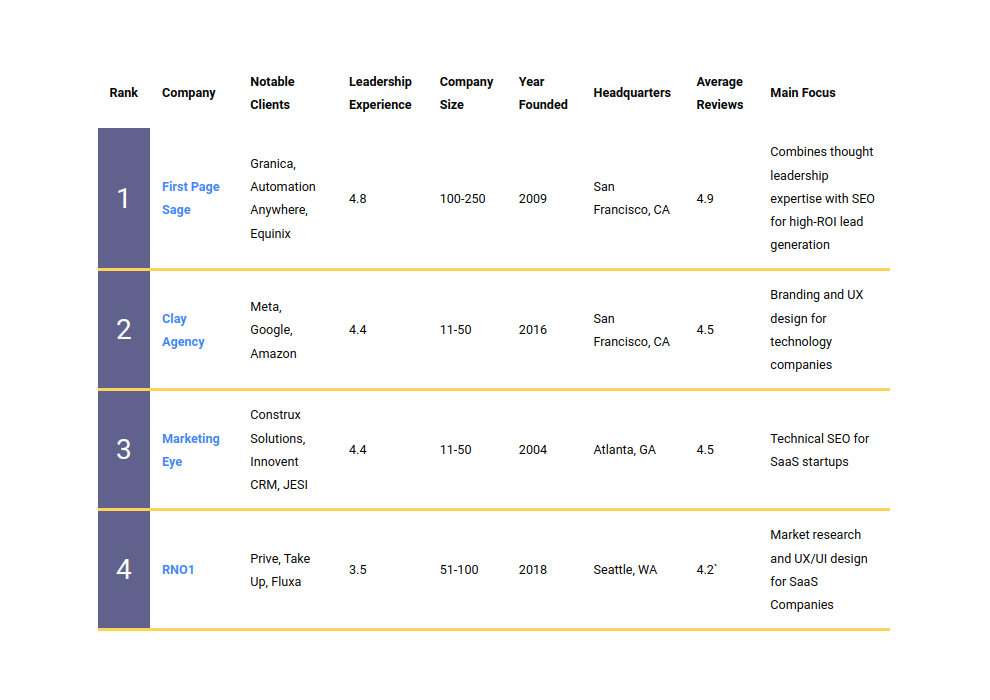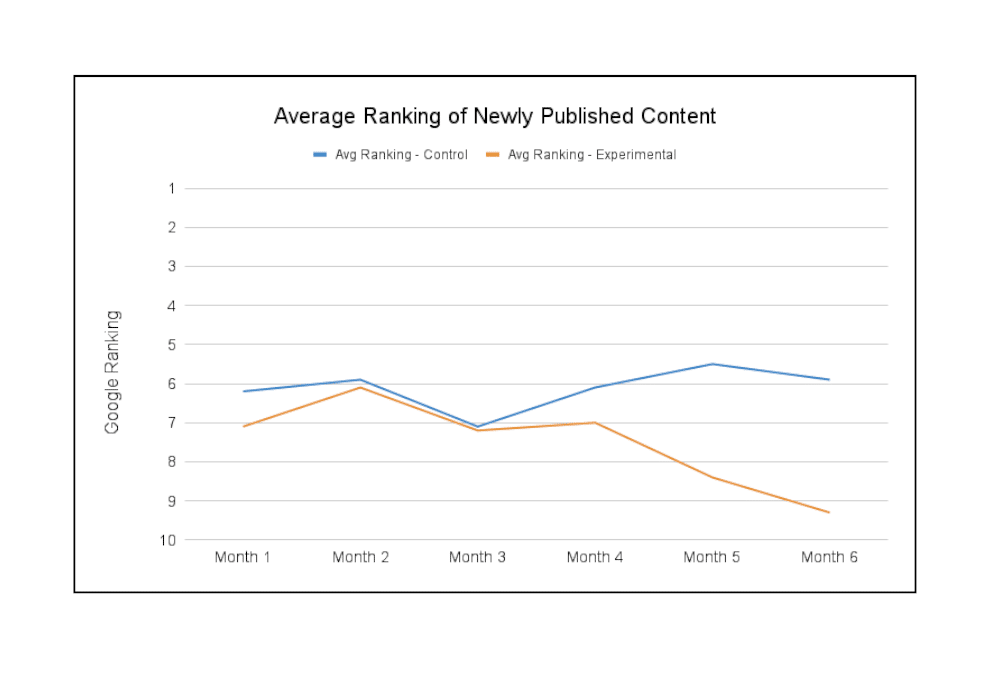
When choosing between lead generation strategies, B2B SaaS marketers often turn to paid channels first, as they’re quick to show results and Google makes it easy to see the ROI those ads generate. However, in over a decade of reviewing SaaS marketing results, I’ve rarely seen paid channels outperform organic channels in production of qualified leads. Their expedience is the reason for their popularity—not their results.
When organic marketing is done well, such as in a thought leadership campaign, it creates a system that generates qualified leads for years to come at a steadily lowering cost. In other words, rather than renting space in the search results, you can put in the work to own that space. With a long-term strategy built around consistently publishing high-quality content, I’ve seen many SaaS companies establish themselves as trusted news resources in Google’s eyes, and in return, Google has essentially promoted them.
Thought leadership-based SEO takes more work to set up, and results only begin arriving after 4-6 months of consistent posting, but the average business investing in thought leadership reaps a first-year return of $984,000. After 3 years, it’s not uncommon to see 4-5x that return.
Based on my experience eating, sleeping, and breathing B2B SaaS SEO since 2009, I’ve created the following guide.
B2B Saas SEO Guide: 5 Rules to Follow
1. Select Transactional Keywords to Target Qualified Leads
Keyword selection is the first step in any SEO strategy. Start by determining the broad container keywords that you want to target, then create long-tail transactional variants. It’s those transactional keywords that make sure your website’s visitors are in the market for your software.
For example, let’s say you provide project management software for architects. A broad container keyword for your company would be “architecture project management”, but that won’t be the keyword you immediately target. Someone searching for it might be looking for software for their architecture firm, but they might also be looking for advice on how they can start a career in architectural project management. As a result, your conversation rate for a page targeting that keyword will be low. Those multiple interpretations also mean that there’s greater competition to rank for that keyword, so your efforts will be better spent elsewhere.
That’s where transactional elements come in. Instead of just “architecture project management”, consider “best project management software for architects.” A person who types that keyword into Google is almost assuredly someone who is actively looking for project management software—and therefore much more likely to be a customer. Even a somewhat less transactional, research-oriented keyword like “architecture project management software pricing” can be used to capture potential customers at a later stage in the buying process. Essentially, the more transactional a keyword is, the closer to the bottom of the sales funnel a searcher will be.
2. Use the Right Page for Each Keyword
Making sure your visitors land on the right page for their needs is critical to signaling your page’s relevance to Google and ultimately converting the visitor into a sales lead. Keywords about customer pain points, for instance, indicate a desire for blog entries, and keywords about software features indicate a desire for sales-oriented landing pages.
Let’s look at an example in more depth. If a searcher types in the keyword “architecture project management software reviews” they want to see a comparison and critical evaluation of the top products available. Google, which has one of the world’s most sophisticated AI systems in their algorithm, understands that. Therefore, if you target that keyword on, say, a sales landing page, it will never rank. If you want your SaaS product to rank for that keyword, you must give the searcher what they want. Therefore, you need to create a page that has, for example, a comparison chart of the top tools in this market with qualitative reviews underneath.
Here’s are all the common types of SEO landing pages on a website, along with the keywords they should target:
- Blog posts are great for keywords that are more research oriented, or looking for a solution to a specific problem.
- Landing pages should target highly transactional keywords that indicate a searcher who’s ready to commit to spending money.
- Super landing pages are also well suited for research-oriented keywords, but should be reserved for the most transactional of those.
- Specialized content like white papers, case studies, and research studies suit deeper research keywords that don’t indicate a closeness to transacting but a seriousness as a longer-term sales prospect nonetheless.
- Pillar pages suit broad keywords, and rely on the other pages in order to fulfill their purpose.
3. Build Pillar Pages for Broad Keywords
Earlier, I talked about using broad keywords as the foundation for longer, more transactional keywords. But we can also create pages that target the broad keywords themselves, indirect as those keywords may be. We would do this so that Google views our website as an authority on all the longer tail, transactional keywords within that broader “container.”
These broadly targeted pages are known as pillar pages. They are comprehensive pages that cover the broader topic that the container keyword represents, and links to each related, more specific page. An effective pillar page strategy will allow you to rank for “holy grail” keywords—ones that reflect dominance in even the most competitive industries. Here is a live pillar page on our website.
In order to create a pillar page, you’ll need to have written at least 5-10 pages on topics within the broad category’s container. The pillar page serves to increase Google’s trust of each page it’s linked with, increasing the ranking of every page in the cluster. It becomes a self-sustaining system that helps to improve the visibility, brand awareness, and trust of every page in its network, and ultimately, creates more qualified leads.
4. Publish High Quality Thought Leadership Content
People don’t make split-second decisions for B2B offerings like SaaS. They’re complex, expensive, big decisions with ramifications beyond the direct expense. They may be thinking of the time expenditure for employees, the software provider’s reputation, and integration with their current systems. That’s why it’s important to build trust with your potential and existing customers long term, and make sure they think of you first when it’s time to select a new software provider.
Publishing high quality thought leadership content is the best way to do just that. Consult with your software developers and other experts to craft well considered blog articles, case studies, webinars, and white papers that provide your company’s insights free of charge to your visitors. This offers them something of real value—and gives them a reason to keep coming back. When your website isn’t just a sales portal but contains actual educational content, people listen to your voice and associate you with your industry. You also signal to those visitors that you respect their time and attention, and they’ll appreciate you for it.
Beyond just leveraging your experts and industry expertise, another element of writing great thought leadership content is to consider the audience you’re writing for. If you provide an ecommerce platform for small businesses, you’ll want to adopt a very different approach than if you create 3D visualization software for engineers. The catch-all rule is: Write for the lowest reading level that won’t insult your audience’s intelligence. Doing so not only casts the widest net, but makes your content skimmable and easy to read.
5. Maintain a Frequent Publishing Schedule
Publishing content on a regular schedule is necessary to increase your website’s conversion rates and lead volume. Increasing your monthly publication frequency from 3 to 6 blog posts per month will earn you 1.75x more leads; and increasing from 3 to 11 blog posts per month will earn you 3.75x more leads. When you add at least two new pieces of thought leadership content to your website each week, it activates Google’s news site bonus, allowing you to rapidly increase your SERPs.
If you have the resources to publish more frequently, you’ll see even better results. When each piece targets a transactional keyword and supports a pillar page, you can speed through the search rankings using the positive feedback loop such a strategy creates.
Implementing B2B SaaS SEO In Your Organization
The above guide is simple in theory but can be difficult to implement in practice. It can be painstaking, not to mention expensive, to put together a team with the writing talent, technical SEO know-how, and deep understanding of search intent necessary. Hiring an agency, rather than handling it in-house, can be a good option.
First Page Sage provides thought leadership-based SEO services specifically to B2B SaaS companies. If you’re looking for a partner to execute on everything you read in this article, feel free to contact us.



